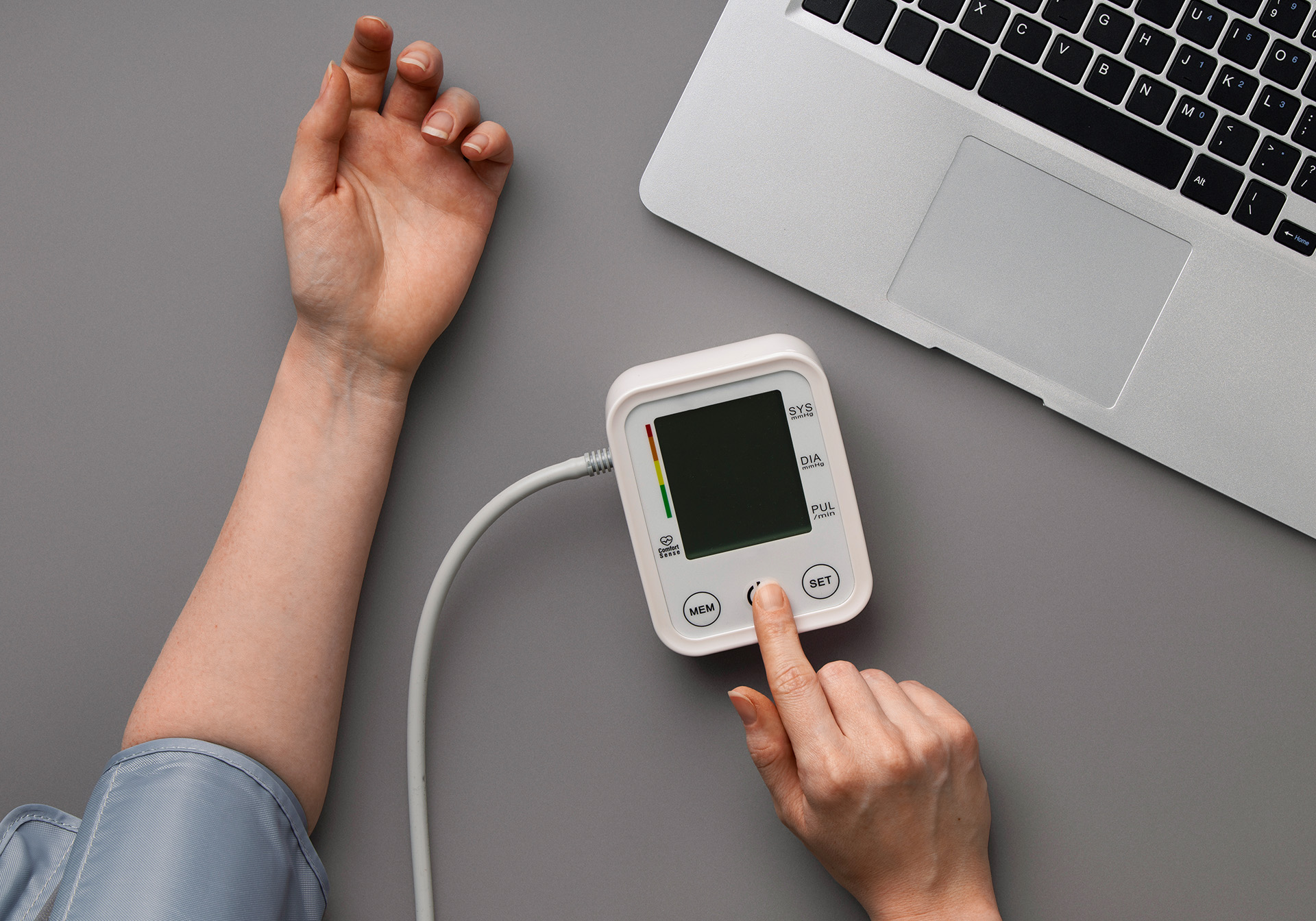
- Blog
- August 7,2024
- 0 Comments
Remote patient monitoring (RPM) devices monitor, analyse and report patient’s data from home to the doctor.
Wearable healthcare technology refers to health monitoring devices worn on the body to help monitor the user’s health data. These devices use biosensors to collect different data from the patient such as heart rate, blood pressure, oxygen level, temperature, blood sugar, weight, sleep patterns, and activity. They are generally convenient and easy to use and some can even relay information to your healthcare practitioner. Home monitoring is helpful for patients availing online consultation. The continuous monitoring for a patient at home can help the doctor take crucial treatment decision.
Health Monitoring Devices
- Blood Pressure Monitors – Blood pressure monitoring can assist with management of many conditions including hypertension, diabetes, congestive heart failure, and kidney dysfunction.
- ECG Monitors / Electrocardiography (ECG) Devices – Whether in handheld, wearable, or patch form, these devices can help detect life-threatening conditions. ECG can catch symptoms of arrhythmia both symptomatic and asymptomatic and myocardial ischemia It also help clinicians to diagnose and treat syncope and presyncope .Also helpful in monitoring the effect of drug therapy.
- ECG + Stethoscope – The ECG is commonly used for patients with cardiac conditions like arrhythmias or coronary artery disease. The stethoscope amplifies the internal sounds of the body, enabling the provider to capture heart and lung sounds to enable the clinician to remotely diagnose the patient’s condition. At home, the patient self-monitors and the ECG or stethoscope reading is then sent directly to the clinician to review.
- Pulse Oximeter- These devices have been used for decades by people with chronic heart or lung issues, and by people who are on supplemental oxygen i.e. congestive heart failure, bronchial asthma, chronic obstructive airway disease, pneumonia, obstructive sleep apnoea etc.
- Bluetooth Thermometer/ Infrared Thermometer -There are many types of Bluetooth thermometers available on the market today, including non-touch digital thermometers that scan the forehead (temporal artery) and contact thermometers which most commonly are placed under the patient’s tongue for an accurate reading. Useful in fever detection and for monitoring response to treatment.
- Bluetooth Scale – useful in managing congestive heart failure, Obesity, Kidney failure.
- Glucometers – Glucometers test a patient’s blood sugar. For diabetes treatment efficacy monitoring.
- Continuous Glucose Monitor (CGM) – Monitor medication effects. Track how diet and exercise affect blood sugar levels, track progress toward treatment goals.
- Sleep Tracker – can guide on sleep duration and quality.
- Anticoagulation Testing Device – Patients with atrial fibrillation, artificial heart valves, deep vein thrombosis (DVT), or pulmonary embolism are on oral anticoagulation like Warfarin, Acitrom etc. The efficacy of medicine dose is reflected by PT/INR test. Anticoagulation testing devices usually require just one drop of blood and about one minute to yield results. Patients then send the gathered information to their providers and await instructions on how to proceed with treatment
- Fitness Trackers – Activity trackers enable providers to track their patient’s steps, heart rate, fall risk, and even sleep.
*The opinion expressed in the Blog is of Dr Vijay D’Silva
The information provided in the blog is for educational purpose only and does not substitute for professional medical advice, diagnosis or treatment.
Do not ‘self-diagnose/ treat’.
Consult a qualified medical professional for opinion and treatment.





